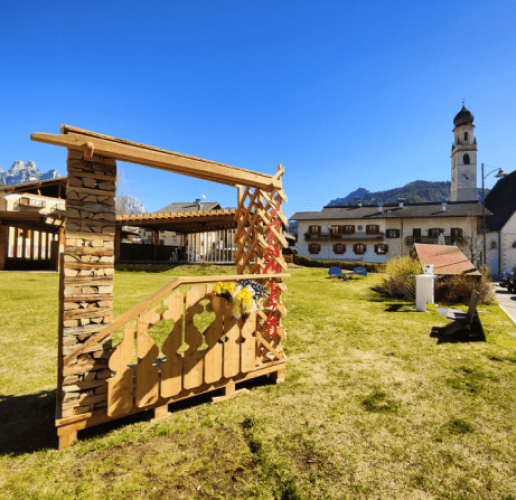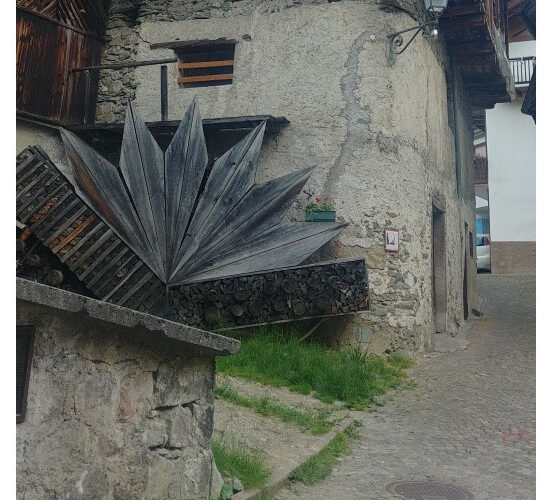The house with the blue shutters and kitchen gardens

The Bond house has blue shutters which complement the white plasterwork, once all rendering was in rough plaster. The colours of Mezzano often come up. For those of you who have been with me since the start, you might well remember the painted bell tower! Well, just note the shutters, here they are glossy blue, but you will also see red and green. Oh! How I love colours! This was the last house built in the old part of the village and it followed the criteria for saving land: for example, the external stairway is in stone although it is concealed by the wall. Look too at the special arched openings of this stairway.
There are small plots of cultivated land here. The kitchen gardens are usually beside the houses for convenience, forerunners of the rather abused food miles. There are 250 kitchen gardens in the village, they are the gardens that are the green heart of rural, used for growing food, but also a variety flowers that colour and brighten places around the village. Vegetables, herbs, fruit trees associated to local cuisine are all grown here.
In the kitchen garden to your left there is the wood-stack “Twisted woodpile”, otherwise known as “Pollution”. Will nature, represented by the tree planted in its midst, be able to survive the noxious artificial cage? Or will it die? Might it even be devoured? If you pass by here in a couple of years, you will surely have an answer.
Continue straight on and you will arrive in “Piombin” square where one of the seven fountains in the old village of Mezzano makes a fine show of itself. In the past the water that fed this fountain came directly from the first tunnel – “stol”. Turn around and you will see “The eye of Mezzano”, but not those ones you are now used to seeing. This installation “The eye of Mezzano”, is made in split logs and wood. It watches you as you watch it, as you walk past it, as you walk away. Will you remember it? The eye will certainly remember you.
























